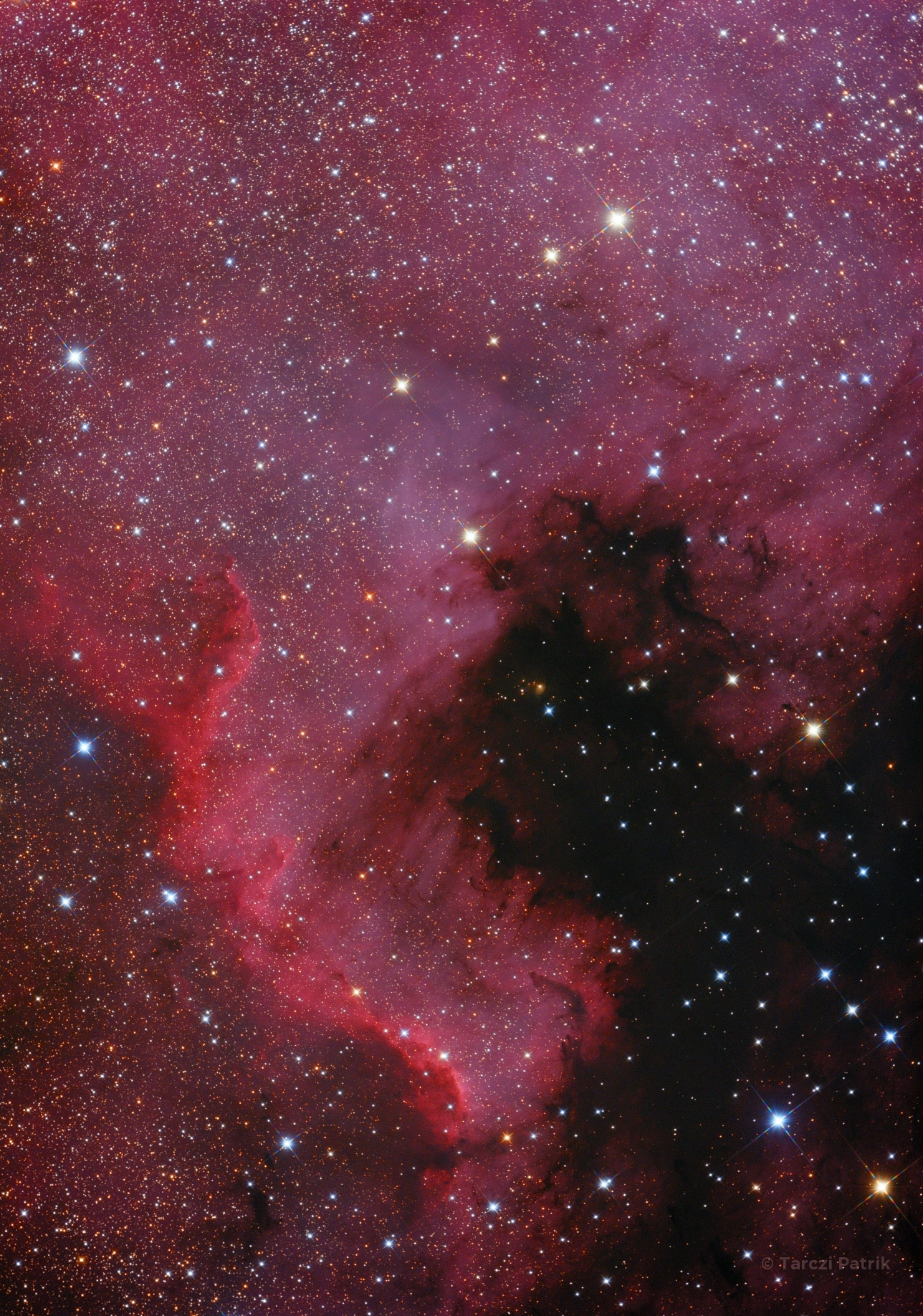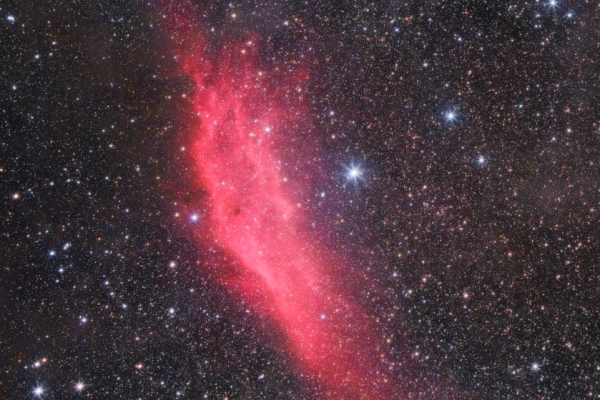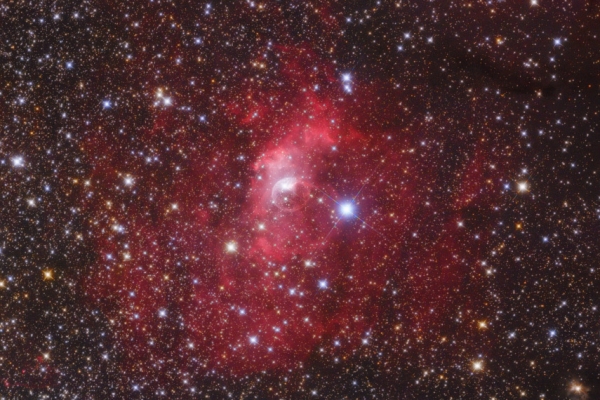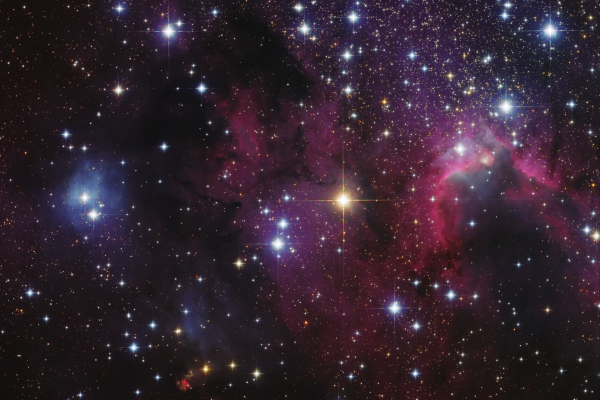The North America Nebula
NGC7000

Technical data
| Instrument: | 173/700 Newton-astrograph (ZsIO), SkyWatcher comacorrector F/4 |
| Camera: | Atik One 6.0 |
| Filter: | Baader UV/IR block |
| Mount: | SkyWatcher NEQ6 Pro Synscan (modified) |
| Guiding: | Lacerta M-Gen autoguider |
Image data
| Exposure time: | 37*4,5 mins ISO 800 |
| Location, date: | Hungary, Mount-Mátra, Ágasvár - 2014. June 27. |
| Transparency: | 6/10 |
| Seeing: | 5/10 |
| Temperature: | 12 °C |
| Processing: | CCDStack, Registar, Pixinsight LE, Photoshop |
Description
The name of the photo hail from shapes of the emission nebula. You can easly recognise the Gulf of Mexico, Florida Peninsula, Yucatan Peninsula.
Technical data
| Instrument: | 173/700 Newton-astrograph (ZsIO), SkyWatcher comacorrector F/4 |
| Camera: | Atik One 6.0 |
| Filter: | Baader UV/IR block |
| Mount: | SkyWatcher NEQ6 Pro Synscan (modified) |
| Guiding: | Lacerta M-Gen autoguider |
Image data
| Exposure time: | 37*4,5 mins ISO 800 |
| Location, date: | Hungary, Mount-Mátra, Ágasvár - 2014. June 27. |
| Transparency: | 6/10 |
| Seeing: | 5/10 |
| Temperature: | 12 °C |
| Processing: | CCDStack, Registar, Pixinsight LE, Photoshop |
© Patrik Tarczi
Recommended photos

The complex of California Nebula
A wide-field photograph of the California Nebula and its surroundings. The connection of the cosmic dust and the bright nebula can be seen.

The Bubble Nebula
The Bubble Nebula and its surroundings, inter alia, M52 located in the border of constellation Cassiopeia.

The entrace of the sky's cave
This colorful skyscape features the dusty, reddish glow of Sharpless catalog emission region Sh2-155, the Cave Nebula.


